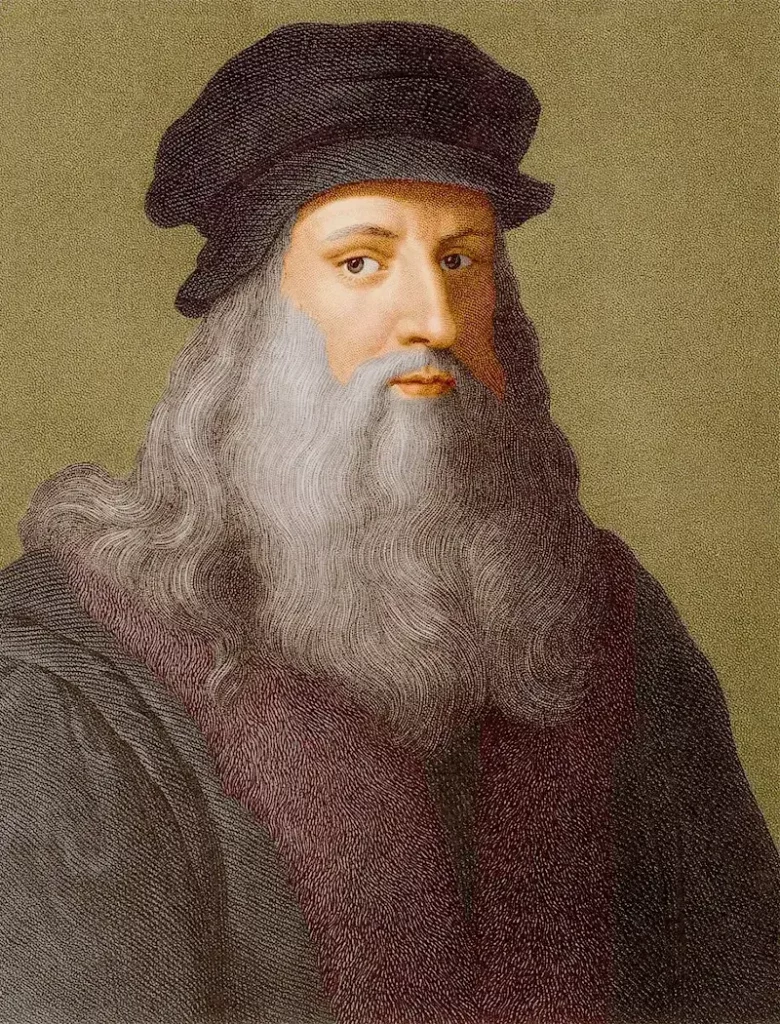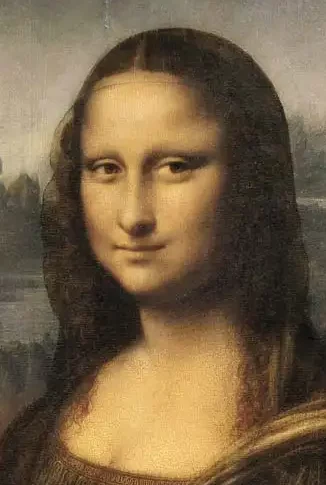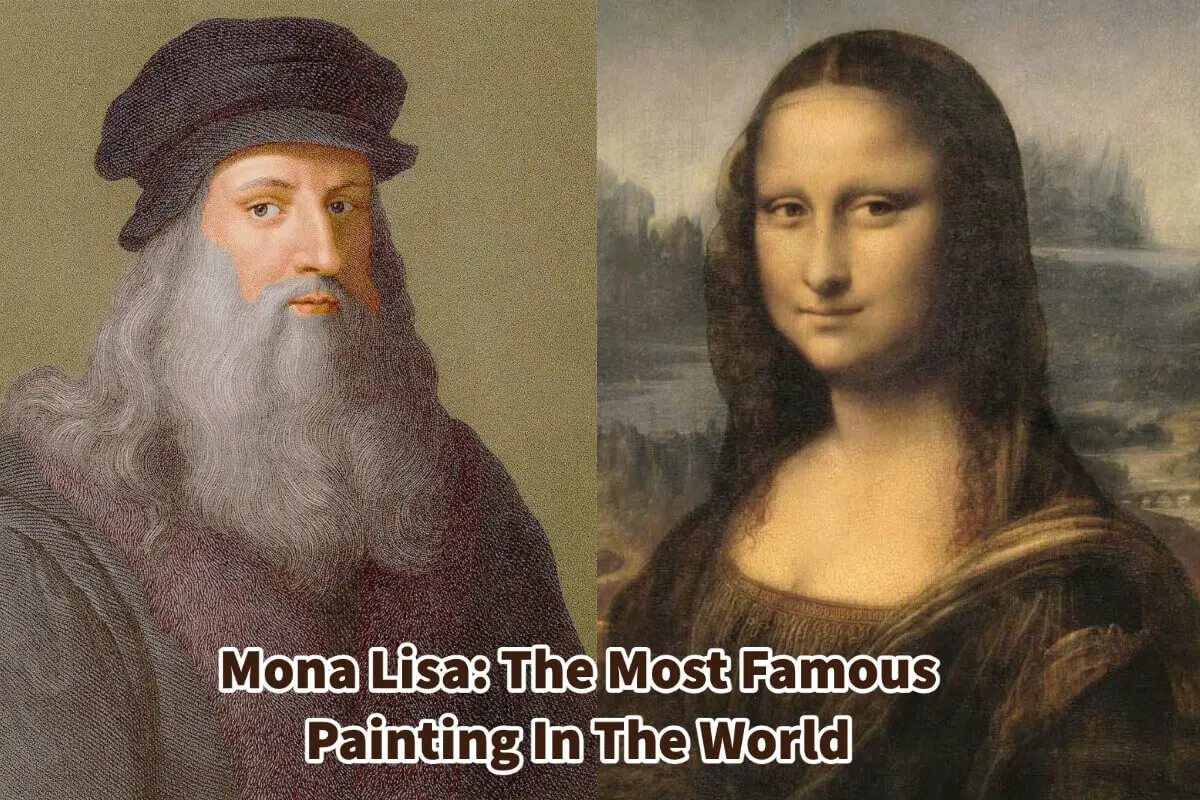When discussing the world’s most renowned and widely viewed paintings, one artwork consistently claims the spotlight: the Mona Lisa.
Painted by the legendary artist Leonardo da Vinci and completed in 1506, it is the world’s most famous and most viewed painting. However, its significance extends far beyond mere popularity. The Mona Lisa’s intriguing history, including a daring theft from the Louvre, has contributed to its enigmatic allure. Read on as we will delve into the captivating story of the Mona Lisa, exploring its artistic mastery, the mesmerizing smile, and the extraordinary events that have elevated it to iconic status in art.
Table of Contents
- The Enigmatic Mona Lisa: A Journey Through History And Fame
- Historical Significance Of The Mona Lisa
- The Enigmatic Smile Of The Mona Lisa Continues To Mesmerize
- Symbolism And Hidden Messages Of Mona Lisa Add To Allure
- The Mona Lisa Is A Masterpiece Of Renaissance Art
- Frequently Asked Questions
- Related Questions
The Enigmatic Mona Lisa: A Journey Through History And Fame
The Mona Lisa, also known as La Gioconda or Monna Lisa, is undeniably one of the world’s most famous and widely viewed paintings. Painted by the legendary artist Leonardo da Vinci during the Renaissance, this masterpiece has captivated audiences for centuries. Its intriguing history, including a stint in Napoleon’s bedroom and a notorious theft, has only added to its allure.

Read on as we will delve into why the Mona Lisa is renowned, exploring its artistic qualities, the enigmatic smile, and the events that have made it an icon in the art world.
The Creation Of A Masterpiece – The Mona Lisa
Leonardo da Vinci began working on the Mona Lisa around 1503, completing it in 1506. It is believed that it is a painting of Lisa Gherardini, the wife of Francesco del Giocondo, a Florentine merchant and that the Florentine merchant commissioned the painting.

Leonardo used oil on a poplar panel, employing his unique artistic techniques to create a mesmerizing work of art.
One of the reasons the Mona Lisa stands out is due to the innovative techniques employed by Leonardo. He used sfumato, which involves the delicate blending of colors and tones to create a soft, hazy effect.
This technique gave the painting a mysterious quality, adding depth and realism to the subject’s features.
The Enigmatic Smile Of Mona Lisa Explored
One of the most intriguing aspects of the Mona Lisa is undoubtedly the subject’s enigmatic smile. Leonardo masterfully depicted a smile that appears to be both elusive and captivating.
The smile is not easily deciphered, leaving viewers with ambiguity and intrigue. This element of mystery has contributed significantly to the painting’s fame and enduring appeal.
Some art historians speculate that Leonardo painted Mona Lisa as a female version of himself. This theory suggests that the artist imbued the painting with introspection and self-reflection, blurring the lines between the portrait and the artist’s identity.
While this hypothesis is speculative, it adds another fascination to the artwork.
Historical Significance Of The Mona Lisa
The historical significance of the Mona Lisa cannot be overstated. As one of Leonardo da Vinci’s most celebrated works, it exemplifies the brilliance of the Renaissance period. This era was characterized by a renewed interest in classical art, scientific exploration, and humanism, evident in the Mona Lisa.
Napoleon’s Connection With The Mona Lisa
During the early 19th century, Napoleon Bonaparte was fascinated with the Mona Lisa. He admired the painting so much that he had it hung in his bedroom at the Tuileries Palace, which was the French royal residence adjacent to the Louvre in Paris before it was destroyed by arson in 1871.

This display of the Mona Lisa in his private bedroom elevated the painting’s status and contributed to its growing fame. Napoleon’s admiration for the artwork highlighted its transcendent beauty and timeless appeal.
The Great Theft Of The Mona Lisa Painting
On August 21, 1911, the Mona Lisa was stolen from the Louvre, causing a worldwide sensation. The theft made headlines and sparked a massive investigation.
Initial suspects included prominent figures such as Guillaume Apollinaire and Pablo Picasso, but they were eventually cleared of involvement.
The actual perpetrator of the theft was an employee of the Louvre, Vincenzo Peruggia. Acting under the orders of an art dealer named Eduardo de Valfierno, Peruggia stole the painting to sell it.
However, his attempt to secure a reward for its return led to his arrest, and the Mona Lisa was recovered in 1913, restoring it to its rightful place in the Louvre.
The Great Theft: Fame Amplified The Mona Lisa
While the theft of the Mona Lisa was an unfortunate event, it inadvertently contributed to the painting’s fame. The incident thrust the artwork into the global spotlight, generating widespread public interest. Newspapers covered the story relentlessly, and the theft became the subject of intense discussion and speculation.
The world was captivated by the audacity of the crime and the idea that such an iconic and valuable artwork could be stolen from the Louvre Museum.
The Mona Lisa’s disappearance created a void in the Louvre, and visitors flocked to the museum to see the space where the painting once hung. People from all walks of life were drawn to the mystery surrounding the theft and the allure of the missing masterpiece.
Two years later, when the painting was recovered, it was greeted with immense relief and celebration. The Mona Lisa was once again displayed in the Louvre, but now it had an added layer of intrigue. The theft made the Mona Lisa even more famous, cementing its status as an art world icon.
The Enigmatic Smile Of The Mona Lisa Continues To Mesmerize
Beyond the theft and historical significance, the Mona Lisa’s enigmatic smile continues to captivate viewers. Leonardo da Vinci’s attention to detail and mastery of capturing subtle expressions are evident in this painting.

The smile changes depending on the viewer’s perspective, creating an illusion of movement and depth. This timeless quality has made the Mona Lisa a subject of fascination and speculation for centuries.
Symbolism And Hidden Messages Of Mona Lisa Add To Allure
Another reason behind the Mona Lisa’s fame is the speculation of hidden messages and symbolism within the painting. Leonardo da Vinci was known for his fascination with symbolism and the incorporation of hidden meanings in his works.
Some art historians and enthusiasts have dedicated themselves to deciphering the secrets concealed within the Mona Lisa.
The landscape in the background of the painting, for instance, has been analyzed extensively. Some believe it represents a fantastical landscape, while others interpret it as an allegory of nature or a symbolic backdrop to the figure of the Mona Lisa herself.
These interpretations, although speculative, add a layer of intrigue to the artwork and fuel the ongoing fascination surrounding it.
The Mona Lisa Is A Masterpiece Of Renaissance Art
Ultimately, the Mona Lisa’s enduring fame can be attributed to its status as a masterpiece of Renaissance art. The Renaissance was a period of outstanding intellectual and artistic achievements, and the Mona Lisa exemplifies the era’s ideals.
Leonardo da Vinci’s innovative techniques, such as sfumato, brought realism and depth to the revolutionary painting at the time.
The Mona Lisa also represents a shift in portraiture. Rather than a stiff, formal depiction, Leonardo captured a sense of individuality and humanity in his subject. The viewer is drawn to the eyes and the smile, creating a connection with the painting that transcends time and space.
The Mona Lisa’s fame and status as the world’s most famous and most viewed painting are undeniable. Its enigmatic smile, innovative techniques, and historical significance have made it an enduring art world icon.
From its creation during the Renaissance to its tumultuous journey, including a stint in Napoleon’s bedroom and a notorious theft, the Mona Lisa mesmerizes audiences and sparks intrigue.
Viewers stand before this masterpiece and are drawn into a world of mystery, symbolism, and timeless beauty. The Mona Lisa transcends its physical presence, symbolizing artistic brilliance and the human fascination with the enigmatic.
The Mona Lisa is a testament to the enduring power of art and the ability of a single painting to capture the imagination of millions.
Anita Louise Art is dedicated to art education, great artists, and inspiring others to find and create their art. We love art that uplifts and inspires. #ArtToMakeYouSmile! #ArtToMakeYouHappy!
If you are interested to see any of my art, you can find out more by clicking here. If you are interested in what inspires me and my paintings, you can discover more by clicking here.
We have a free newsletter and would love you to be part of our community; you can subscribe to the newsletter by clicking here. I would be happy to talk to you if you have any questions. You can reach me, Anita, by clicking here.
Subscribe to our Anita Louise Art YouTube Channel filled with great videos and information by clicking here.
Join us for our podcast “5 Minutes With Art.” Spend 5 minutes a week with us to discover and learn about great art and artists. You can find out more about our podcast by clicking here.
Frequently Asked Questions
What is the Mona Lisa, and who painted it?
The Mona Lisa is a portrait painting created by the renowned Italian artist Leonardo da Vinci. Completed in 1506, it is considered one of da Vinci’s masterpieces and is renowned for its enigmatic smile and exquisite artistry.
Why is the Mona Lisa so famous?
The Mona Lisa’s fame can be attributed to several factors, including Leonardo da Vinci’s artistic genius, the subject’s mysterious smile, and the painting’s history, which includes a high-profile theft. Its fame is also enhanced by its residence in the Louvre Museum in Paris, one of the world’s most visited art museums.
What makes the Mona Lisa’s smile so mysterious?
The Mona Lisa’s smile is often described as mysterious due to its subtle and elusive quality. Leonardo da Vinci achieved this effect through his use of sfumato, a technique that creates a soft, blurred transition between colors and tones. The ambiguous expression has captivated viewers for centuries, sparking various interpretations and discussions.
Where is the Mona Lisa currently located?
The Mona Lisa is housed in the Louvre Museum in Paris, France. It has been displayed there since the French Revolution and is a centerpiece of the museum’s vast art collection.
Has the Mona Lisa ever been stolen?
Yes, the Mona Lisa was famously stolen from the Louvre in 1911 by an Italian named Vincenzo Peruggia. The painting was recovered in 1914, and the incident significantly contributed to the painting’s global fame.
How did Leonardo da Vinci create the Mona Lisa?
Leonardo da Vinci used oil paints on a poplar wood panel to create the Mona Lisa. The painting showcases da Vinci’s mastery of techniques such as sfumato, chiaroscuro, and atmospheric perspective.
What is the significance of the background in the Mona Lisa?
The background of the Mona Lisa features a hazy landscape that adds depth to the composition. The use of atmospheric perspective gives the illusion of distance and contributes to the overall sense of mystery in the painting.
How did the Mona Lisa become a symbol of art and culture?
The Mona Lisa’s combination of artistic brilliance, enigmatic subject, and captivating history has turned it into a symbol of art and culture. Its fame transcends the art world, making it an icon recognized globally.
What is the size of the Mona Lisa?
The Mona Lisa measures approximately 30 inches (77 cm) in height and 20 7/8 inches (53 cm) in width. It is a relatively small painting compared to some other masterpieces but has an immense impact.
How has the Mona Lisa influenced art and popular culture?
The Mona Lisa has had a profound impact on art and popular culture, inspiring countless artists, writers, and filmmakers. Its image has been reproduced and parodied in various forms, solidifying its status as the most famous painting in the world.
Related Questions
How Was Leonardo da Vinci Able To Master So Many Different Professions?
Leonardo da Vinci is a man known to have had many different titles and professions during his lifetime. He was able to master this profession because he was a genius. But more than just being a genius, Leonardo is also self-educating and never stops learning. He had an insatiable amount of curiosity about all kinds of subjects.
By clicking here, you can learn more by reading How Was Leonardo da Vinci Able To Master So Many Different Professions?.
What Can We Learn From Leonardo Da Vinci?
Leonardo da Vinci was a philosopher; being a philosopher means that you want to seek wisdom. Leonardo was one person who tried to seek knowledge or enlightenment in his life. Leonardo was an active observer and learner of the human body, human behavior, and nature.
By clicking here, you can learn more by reading What Can We Learn From Leonardo Da Vinci?.
Was Leonardo da Vinci A Philosopher?
Leonardo da Vinci was a philosopher; being a philosopher means that you want to seek wisdom. Leonardo was one person who wanted to seek wisdom or enlightenment in his life. Leonardo was an active observer and learner of the human body, human behavior, and nature.
By clicking here, you can learn more by reading Was Leonardo da Vinci A Philosopher?.

